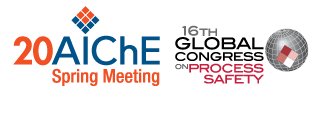

On January 19, 2004, at approximately 6:40 PM, a massive explosion and ensuing occurred at a liquefied natural gas (LNG) train in Skikda, Algeria. The massive blast killed 27 people and caused significant damage to the facility More specifically, the explosion disabled three LNG lines, which impacted approximately 2% of the world’s liquefaction capacity. The explosion was the result of a large hydrocarbon leak that was ingested into the facility’s main boiler firebox, where it ignited and breached the boiler. The boiler explosion then ignited the extensive vapor cloud that formed around the train and led to the significantly larger explosion.
This paper will first present the cascading effects which led to the cause and origin of the catastrophic explosion event, which included: (1) large hydrocarbon leak; (2) vapor cloud formation and ingestion into the boiler firebox via the air inlet; (3) the initial boiler explosion that subsequently ignited the extensive vapor cloud, resulting in very high explosion pressures. Next, this paper will discuss key lessons learned on how such an event could have been avoided by the use of necessary mitigation measures that could have been applied.
Presenter(s)
Once the content has been viewed and you have attested to it, you will be able to download and print a certificate for PDH credits.
If you have already viewed this content,
please click here
to login.
Language
Pricing
Individuals
| AIChE Member Credits | 0.5 |
| AIChE Pro Members | $19.00 |
| Employees of CCPS Member Companies | Free |
| AIChE Graduate Student Members | Free |
| AIChE Undergraduate Student Members | Free |
| AIChE Explorer Members | $29.00 |
| Non-Members | $29.00 |
